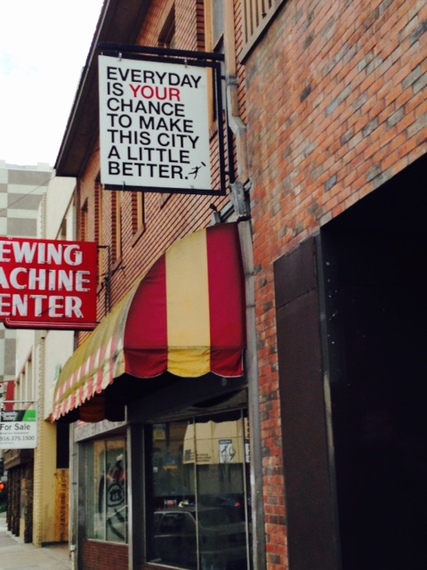Conventional wisdom on civic innovation is that we have all the right ingredients to change government: The timing, the talent, and the technology are all there and if used and blended properly, these "three T's" can positively reshape government. The Second Wave of Civic Innovation is therefore an important inflection point for leadership within our cities to identify which ideas and projects to initiate and which tools and partnerships to develop. In short, it's the distinction between civic innovations as the flavor of the week or as a source of genuine, verified value added, in other words, a true, measurable civic innovation ROI.
Recent commitments by Bloomberg Philanthropies to grant $45 million to cities provide a powerful motivator for city departments and external partners to define the critical issues that could benefit most from Bloomberg's data and technology tools.
Last year, I organized a "Civic Ideation Lab" at the Stanford d.School for leaders from across Silicon Valley's public, private and philanthropic community. In the lead-up to the Lab the two expert innovation companies we worked with, Stanford ChangeLabs and SMALLIFY posed some important questions to consider as we "smallifyed" the focus of the half-day event and to select projects we might launch.
What was the purpose of the Lab? "Identify project opportunities to engage pro-bono talent from across sectors to assist Silicon Valley governments."
Who participated? Government leaders from City of San Jose, Santa Clara and Fremont, talent from regional technology firms, professional services companies and foundations who support civic engagement
In one of the planning meetings my colleague from ChangeLabs asked a question with an interesting analogy:
"Do you think the opportunities with city leaders and private sector talent are "vitamins" or "painkillers?" My response was (and is today) that we should think about the "vitamin" and "painkiller" metaphor through the lens of what civic innovation means to a city resident and what it means for a government employee. I also believe, however, that the two are interrelated -- for example, a pain-point solving issue might be necessary for government staff, but look unimportant to residents.
I believe that we should consider the following questions from the view of a city resident:
Does the civic innovation being considered involve something that matters? For example, in the event of an emergency, such as the recent Napa earthquake, which also rippled through the Bay Area, do I know the appropriate steps and actions to take to locate a shelter with emergency services?
Does the proposed innovation have some promise to improve my quality of life? For example, real-time communication on street closures, whether my trash will be picked up, or if the program at the local library has space available for my child's after-school program?
If the answer to those questions is no, then while interesting and engaging, the civic innovation might not be lead to a meaningful and measurable civic innovation ROI.
From the perspective of a government employee, we referred to the ideas and feedback we received through a series of one-on-one discussions with the participating government leaders and a brief survey. The responses were consistent:
Yes, there are "projects" to engage and some may at first seem mechanical in nature, but have innovative solutions. For example, in the areas of permitting, and emergency/disaster preparedness, there's great potential for improvement in project design and scope. At that point, we then apply technology.
If we're not placing residents first (seeking input, understanding available data collected) then we're not doing right by our residents. The civic innovation projects may be nice to have, but not entirely necessary.
Two areas where private sector talent could dedicate pro-bono time with local governments are: hosting data jams and assisting on budget innovations and cost-recovery initiatives. Both opportunities offer shared learning, drive the open and transparent government agenda forward and play to the interests of young people seeking opportunities to solve big challenges such as housing the homeless and workforce development for the under-employed and unemployed. .
In today's world, it's important for government leadership to foster and strengthen partnerships in projects that are meaningful and measurable for both city residents and government employees. It's not clear whether all that which passes for "innovation" produces concrete, worthwhile results, no matter how civically interesting these reforms seem. I believe the next year will reveal which of the array of civic innovations are here to stay as the next generation of public service for our nation's cities.
